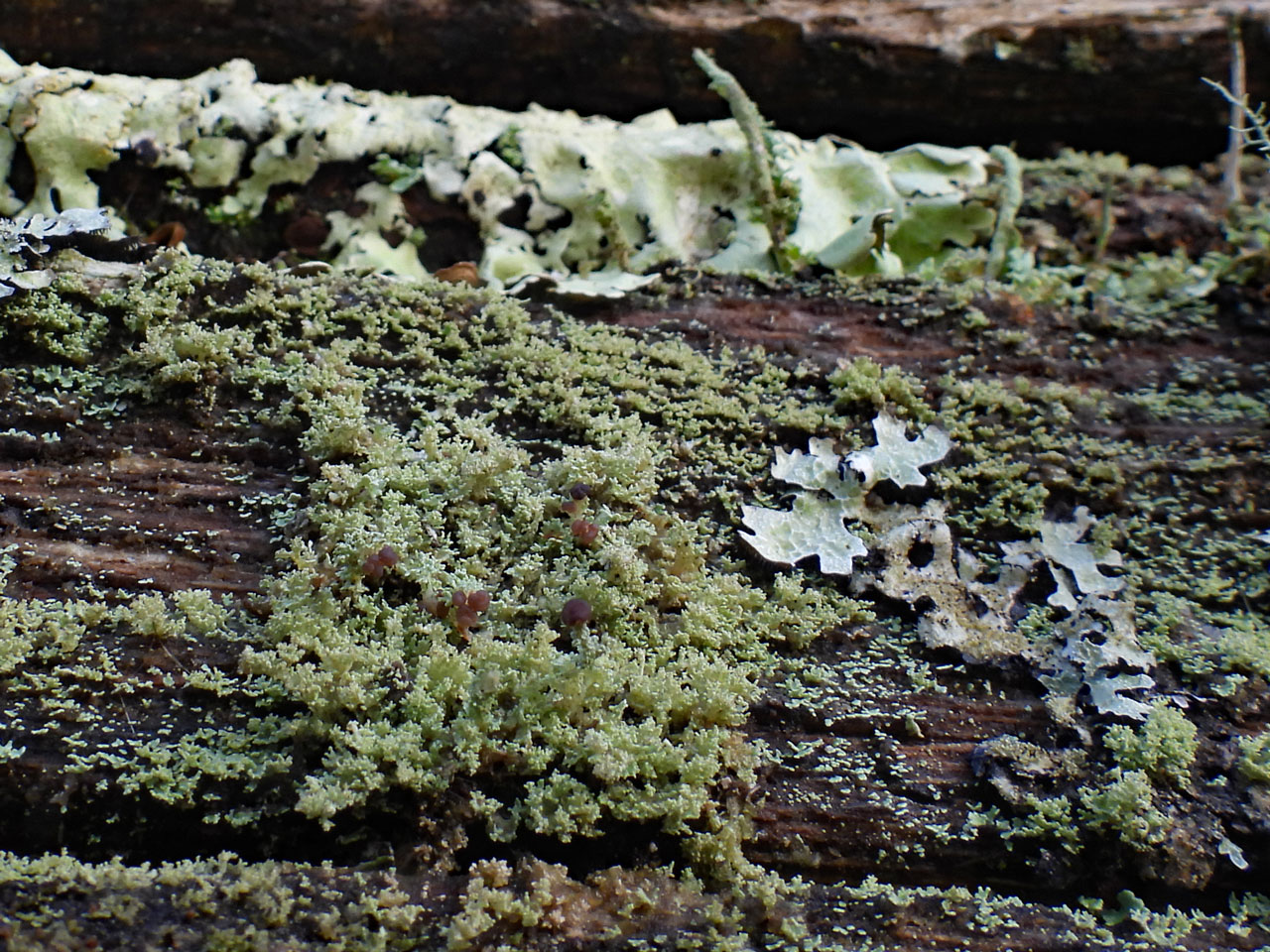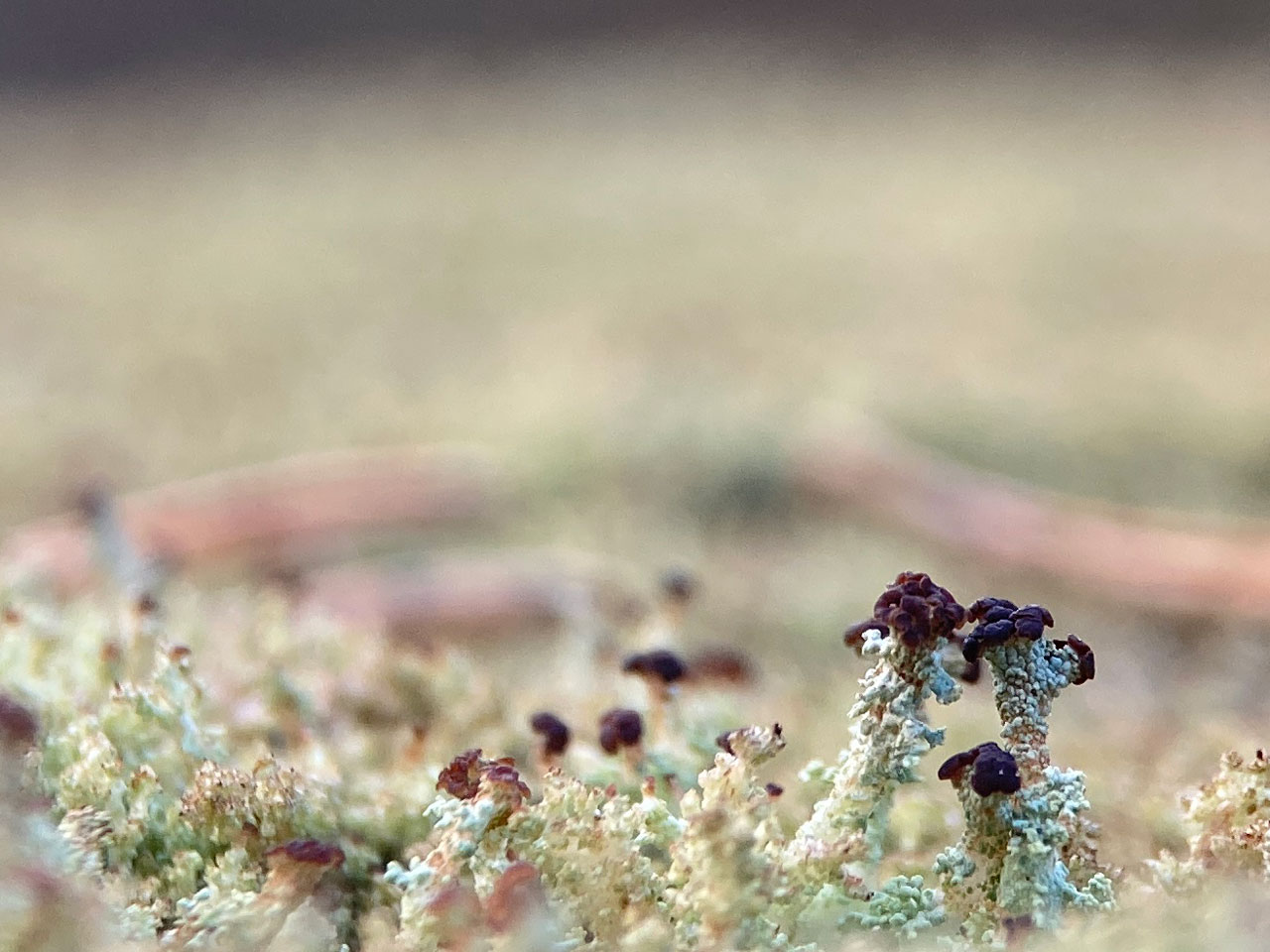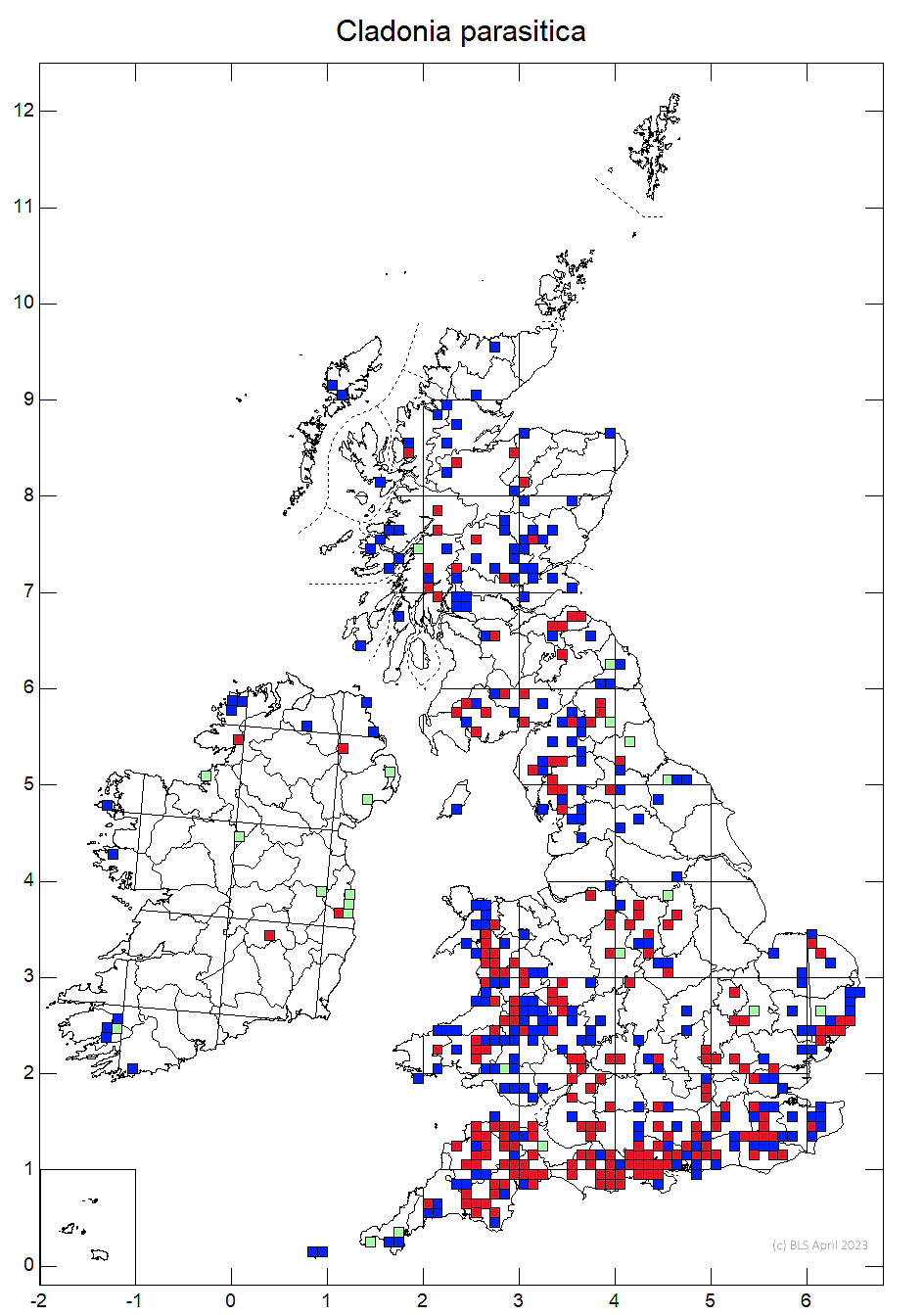Cladonia parasitica
A distinctive squamule mat of greatly dissected, often coralloid-branched and K+ yellow squamules which is easily recognised when fertile. The podetia are short and usually only shortly elevated above the squamules and are distorted and partly decorticate. They support dark brown apothecia at the tips. It is a dead wood specialist found on damp hard lignum, especially Oak or Pine, including stumps as well as fallen or standing dead wood. As it can readily colonise stumps it is widespread and is locally frequent in well wooded areas. Well grown material is distinctive, but sterile material needs care to separate it from poorly grown Cladonia polydactyla, which has the same K+ yellow spot test.
Podetia to 0.5 (–2) cm tall, frequent, often conspicuously elevated above the basal squamules, without cups, irregular, deformed, contorted, sometimes flattened and very irregularly branched, often appearing ± subcoralloid, often ± covered in small, isidium-like granules and partly decorticate, with scattered or numerous squamules and granules, fissured with gaping holes when well-developed. Basal squamules to 0.5 cm long, 0.2–1 mm wide, numerous, elongate, greatly dissected, often coralloid-branched, ± ascending, often coarsely granular-sorediate, forming crowded, compact, ± continuous spreading mat-like swards; upper surface pale to dark grey, lower surface white. Apothecia small, dark brown, at tips of podetia, often on extended projections, mostly clustered. Pycnidia dark brown-black, on the upper surface of basal squamules; Thallus C–, K+ yellow, KC–, Pd+ yellow, UV– (thamnolic and, restricted to apothecia, ± barbatic acids).
Resembles the unrelated Cladonia incrassata in habit, which, however, has contorted, flattened yellowish squamules with podetia-like contortions or extensions bearing red apothecia and which contain usnic acid, and is usually strongly UV+ white or bluish. C. squamosa has larger, less dissected, peeling squamules and larger podetia, which are often perforate. Poorly grown sterile mats of C. polydactyla squamules on wood have the same chemistry, but the squamules are never subcoralloid.
On damp but hard, decorticated wood of branches, trunks, stumps and logs especially of Oak and less frequently on Pine in older woodland, more rarely on consolidated soil of earth banks in woodlands and heathlands.

Widespread but rather local throughout England & Scotland mainly in wooded sites, rare in Ireland.
An ancient woodland indicator in the Southern Oceanic Woodland Index, the Sub-oceanic Woodland Index & Boreal Woodland Index.
Pino-Bodas, R., Sanderson, N., Cannon, P., Aptroot, A., Coppins, B., Orange, A. & Simkin, J. (2021). Lecanorales: Cladoniaceae, including the genera Cladonia, Pilophorus and Pycnothelia. Revisions of British and Irish Lichens 19: 1-45. Link


